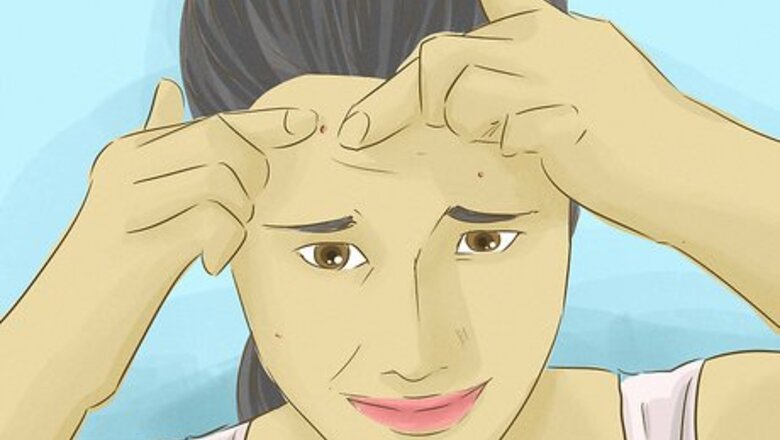
views
Preventing Acne and Related Scars
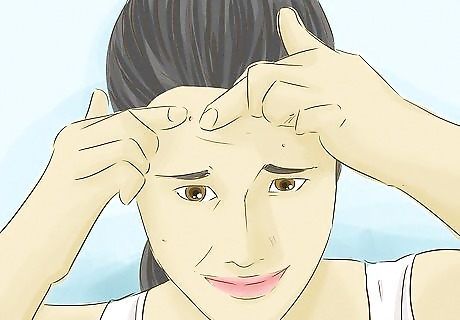
Familiarize yourself with the causes and risk factors of acne scarring. Picking, popping or squeezing a pimple can cause further breakouts and permanent acne scars. The fewer breakouts you have, the less likely you are to develop acne scars. Treating acne is important to prevent scarring, especially with any of the following: Severe, painful cysts and nodules. Nodules are hard, large, and inflamed pimples. Cysts are pus-filled, painful pimples, both of which occur deep in the skin and can often cause scarring. This is called "cystic acne." Acne that began at a young age. This often develops into severe acne within a few years. Dermatologists recommend that a preteen who has acne receive a dermatologic exam. Treating the acne before it becomes severe reduces the risk of developing acne scars. Blood relatives who have acne scars. The tendency to develop acne scars often runs in the family.
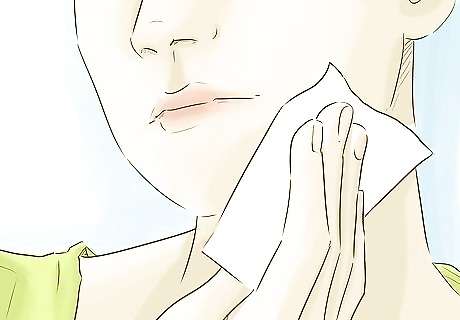
Avoid touching your face. Dirt and bacteria on your hands can clog your pores and cause acne if you touch your face too much. If you feel irritation due to acne, use a gentle, oil-free daily facial wipe to remove excess dirt and reduce irritation. Resist the temptation to touch or pick at your face. Keep your hands clean by frequently washing them or using a hand sanitizer on the go. Do not squeeze or pop your blemishes. This increases the risk of developing scars. In some cases, squeezing a pimple may spread the bacteria even further. Do not cover blemishes with your hair. Keep your hair away from your face with ponytails, headbands or hair clips. Dermatologists also recommend that you wash your hair regularly if it is oily. The oil can transfer to your forehead and face and lead to breakouts.

Avoid too much sun exposure. Moderate sun exposure is beneficial to your immune system. It helps your body produce vitamin D. But, acne scars that are exposed to excessive ultraviolet radiation from the sun often become permanent. Excess exposure to sunlight may also cause sunspots, known as solar lentigines. Sunspots begin forming beneath the layers of the skin and cause small dark spots on the surface of your skin as you age. To protect your skin from sun damage, use a sunscreen with a minimum SPF (sun protection factor) of 30. Some chemicals in sunscreens may cause allergies. You may want to consult with a dermatologist to find the sunscreen that’s right for you.
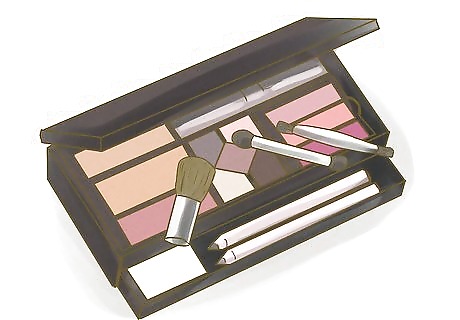
Choose cosmetics with care. Some cosmetic products can worsen acne and increase the risk of scarring. Choose non-toxic cosmetics and apply them sparingly. Use paraben-free skincare. Parabens are preservatives used in many cosmetic products. They can cause skin irritation and inflammation for people who suffer from acne, and may be a potential allergen. Butyl and propyl paraben are more toxic than methylparaben and ethylparaben. But, the latter is more easily absorbed by the human body. Do not use cosmetic products with synthetic dyes. Your skin absorbs almost 60% of all substances applied to its surface. Avoid cosmetics with synthetic colorings. Specifically, avoid E102, E129, E132, E133, and E143. Besides being bad for your skin, they are neurotoxins and may also promote cancer. Use oil-free cosmetics for your skin and hair. Do not apply makeup immediately after washing your skin as it can also clog your pores, leading to more acne breakouts. After wearing makeup, always wash your face with a gentle cleanser to prevent your pores from becoming clogged.

Don't smoke. Smoking can cause smoker’s acne. This is a condition in which the body does not produce an inflammatory response to heal the skin as quickly as it would with normal acne. Smokers are also 4 times more susceptible to moderate post-adolescent acne. This is particularly true for women between the ages of 25-50. Cigarette smoke may cause skin irritation for people with sensitive skin. Smoking can also cause other skin conditions, such as wrinkles and premature skin aging, by creating free radicals. Free radicals are chemically reactive molecules that can damage cells. Smoking also impairs collagen production and degrades skin proteins. Collagen is a structural protein with anti-aging properties. It promotes cell growth and repair, improving the durability and appearance of your skin. Not having enough collagen can greatly reduce the effectiveness of acne treatments. Reduced collagen production can also slow down the rate of healing for scars.

Avoid stress. Studies show that emotional stress can worsen acne, especially in females. Some ways to manage stress are: Listening to music. Listening to soothing music can decrease blood pressure, heart rate, and anxiety. Making time for recreation. Replace unnecessary, time-consuming chores with pleasurable or interesting activities. If the source of stress is in the home, plan some time away, even if only for an hour or 2 per week. Meditation. This can help reduce blood pressure, chronic pain, and anxiety, and it can lower cholesterol levels. It helps promote physical and emotional well-being. For a simple meditation exercise, sit with your legs crossed in a quiet environment and take slow, deep breaths for at least 5–10 minutes. Try to get at least 5 minutes of meditation time every day to help keep your stress in check. Other meditation techniques include exercises such as tai chi or yoga, biofeedback, and massage therapy.
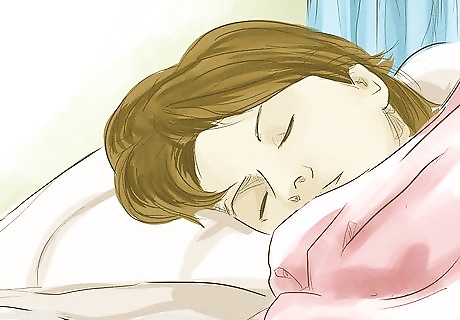
Get enough sleep. Collagen production and cell repair is faster and more effective when you’re sleeping. You must give your body enough time to heal itself to get rid of scars. Having a regular sleep schedule helps to ensure better quality and consistent sleep. Avoid caffeine, nicotine, alcohol, and sugary drinks 4 to 6 hours before sleeping. These can act as stimulants to keep you awake. A quiet, dark, and cool environment can help promote sleep. Use heavy curtains or an eye mask to block light. Keep the temperature comfortably cool—between 65 and 75 °F (18 and 24 °C)—and the room well ventilated.
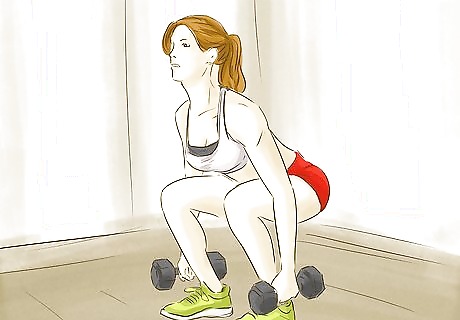
Exercise regularly. Exercise helps reduce stress hormones such as adrenaline and cortisol. It also helps strengthen the immune system to fight off bacteria, viruses, and harmful free radicals. This plays an important role in reducing acne. You should get at least 30–40 minutes of moderate exercise or 10-15 minutes of intensive exercise each day. Moderate exercise includes walking or recreational swimming. Intensive exercise includes activities such as such as basketball, soccer, and hiking.
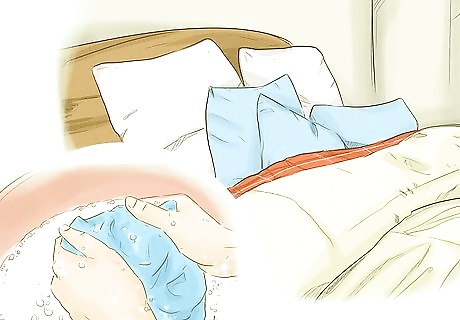
Keep your clothes and bedding clean. Do not wear tight-fitting, synthetic clothes that rub against your skin. Keep your pillowcases clean. Helmets, masks, headbands, and other tight-fitting sports equipment can rub against your skin and make acne flare up. Be sure to keep sports equipment clean and shower after exercise. Pillowcases and sheets can trap bacteria, dirt, and dead skin cells. These can get into your pores when you sleep, causing more acne breakouts that can lead to further scarring. Change your pillowcases often. Consider putting a fresh towel on your pillow every night if you apply an overnight acne treatment.
Cleansing Your Skin
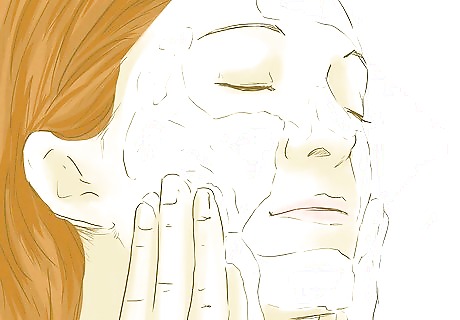
Use a mild, non-soap cleanser. Keeping your skin clean is important for preventing breakouts, but some commercial cleansers can do more harm than good. Non-soap cleansers are free from chemicals that can cause irritation and scarring in acne-prone skin. Aim for an organic, chemical-free cleanser to avoid further irritation and scarring. Many natural cleansers are easily available at most pharmacies. People with sensitive skin should avoid astringent cleansers. They can cause dryness and irritation. Use oil-free, non-abrasive facial wipes for when you don’t have time to rinse your face with a cleanser. To make a natural cleanser and toner, infuse 1 teaspoon (about 2/3 g) of green tea in a cup of warm water for 3 to 5 minutes. Then, strain the tea into a clean bowl and let it cool for 15–20 minutes. Apply the tea to the affected area with a cotton ball, facial wipe, or microdermabrasion cloth.
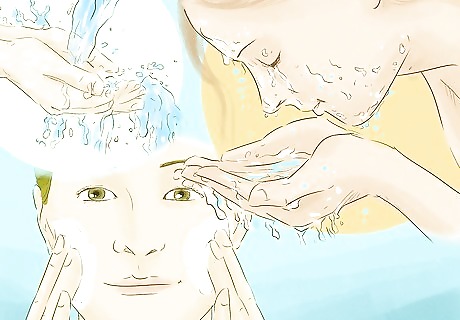
Wash your face correctly. Cleansing your face is not only a matter of what product you use. It also matters how you wash. Follow these instructions: Wash your hands before applying the cleanser, so that dirt and bacteria from your hands don’t clog your pores. Gently rinse your face using lukewarm or cold water before applying the cleanser. Using your fingertips, gently massage the cleanser into your skin for 3 to 5 minutes. Then, rinse using cold water and pat your face dry with a soft towel or washcloth. Dermatologists recommend that you limit washing to twice a day and after sweating. Wash your face once in the morning and once at night, as well as after sweating heavily. Perspiration, especially when wearing a hat or helmet, irritates the skin. Wash your skin as soon as possible after sweating.
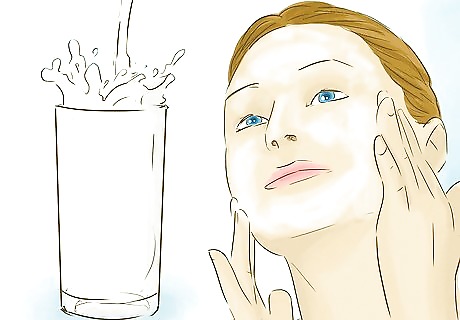
Try washing your face with milk. In addition to natural cleansing products, you can wash your face with plain, full-fat milk. The lactic acid in milk works as a mild, natural exfoliant to remove dead skin cells and even out the tone of your skin. It also reduces scars and blemishes. Simply take 1 tablespoon (15 mL) of milk and apply it to your face with a cotton ball. Massage your face in a circular motion for at least 3 to 5 minutes to effectively remove dirt from your pores. Coconut milk has medium chain fatty acids, which kill bacteria and viruses and help to reduce the number of pustules and cysts. So you may want to replace cow’s milk with coconut milk that is readily available in the East Asian section of your supermarket. If you have inflamed pimples or oily skin, mix a teaspoon (about 3 g) of rice or gram flour into 1 tablespoon (15 mL) of milk to make a mixture. Using your fingers, gently massage it into your skin. Rinse using cold water, then pat dry with a soft washcloth.
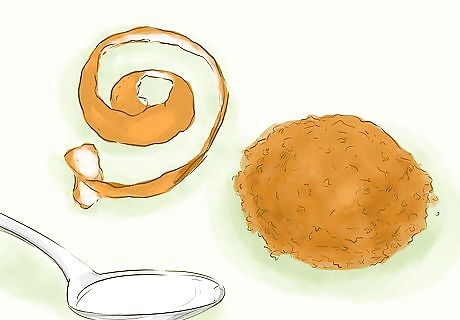
Use dried orange peel. Dried orange peel also makes a good natural cleanser. Orange peel contains vitamin C, which helps boost collagen production and repairs skin cells. This reduces the appearance of acne scars and blemishes. Orange peel is especially good for people with oily skin, as it washes away sebum (skin oil). The essential oils of the peel also naturally moisturize the skin. Dry out an orange peel, then grind it into a fine powder using a coffee grinder or food processor. Mix half a teaspoon (about 1 g) of the powder with 1 teaspoon (4.9 ml) of milk, coconut milk, or yogurt, then gently rub the mixture into your skin. Leave it on for 10–15 minutes, then rinse with cold water. The cooling effect of the milk or yogurt also helps reduce inflammation and removes dead skin cells.
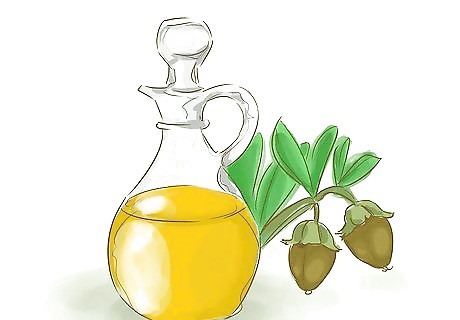
Use jojoba oil. Jojoba oil comes from seed of the jojoba tree. It is the closest compound to the natural oil our skin produces, also known as sebum. However, it is non-comedogenic, which means it does not clog up pores like sebum. This reduces the occurrence of acne. Applying jojoba oil to the skin can trick the skin into thinking it is producing enough oil, thus balancing oil production. Put 1 to 3 drops of jojoba oil on a cotton ball to cleanse your skin. People with dry skin can use 5 to 6 drops, as it is also a natural moisturizer. Do this 2-3 times a week for the best results. Since jojoba oil is not an irritant or allergenic, you can use it to remove makeup, including eye-makeup. You can find jojoba oil at most health food stores. Be sure to store the oil in a cool, dry place.
Exfoliating to Remove Scars

Use a gentle exfoliant product. Exfoliation is the removal of dead skin. It can help minimize the appearance of acne scars and hyperpigmentation (red spots). It is also important to remove dead skin that can potentially clog the pores, causing acne to return. There are many products available for exfoliation. Before using any exfoliating products, speak with a dermatologist to determine what treatment is right for your skin type. People with dry, sensitive skin should limit exfoliating to once or twice per week. People with oily, thicker skin can exfoliate once every day. A soft microdermabrasion cloth is a great tool for exfoliation. These are made of microfibers that suck the dirt and oil from pores without any pressure or rubbing. After rinsing with a cleanser, dry your face with a soft washcloth or towel. Then, gently massage your face with the cloth for 3 to 5 minutes. After each use, make sure to wash it with soap and let it dry.
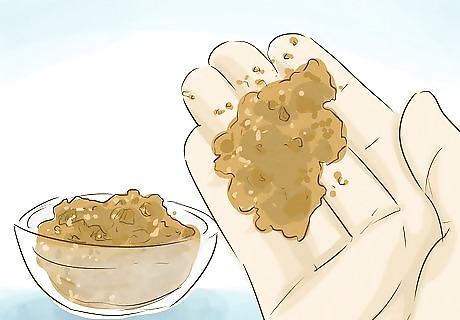
Use a sugar scrub. You can make your own exfoliant from sugar. Sugar is one of the best natural beauty ingredients to exfoliate your skin. Sugar scrubs help remove dead skin and rejuvenate the inner layers of skin by cleaning all the dirt from the pores. Sugar also has a natural anti-aging effect on the skin. It helps remove harmful free radicals to slow down the aging process. Regular granulated sugar, brown sugar, or organic sugar all work well for sugar scrubs. Brown sugar is the finest and least abrasive. Regular granulated is only slightly coarser and works fine. Organic sugar is the coarsest. To make your own scrub, combine ½ a cup (100 g) of brown sugar with 2 tablespoons (30 mL) of glycerin, ⁄3 cup (79 mL) of coconut oil and 2 tablespoons (30 mL) of sweet almond oil. You can also add a few drops of lemon or lavender essential oils for fragrance. Mix these ingredients in a small bowl, then transfer the mixture to a jar. To use a sugar scrub, massage a small amount onto the affected area for 3 to 5 minutes. Rinse with warm water. Store the scrub in a cool, dry place for no longer than 2 to 3 weeks.
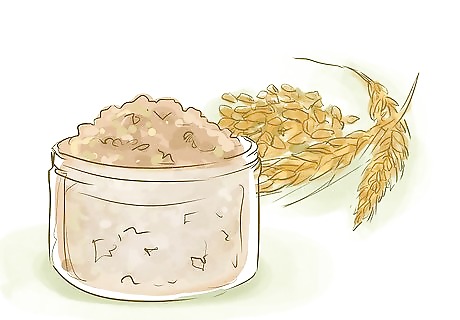
Try an oatmeal scrub. For a natural exfoliant, boil 1 tablespoon (5.6 g) of organic oatmeal in ⁄4 cup (59 mL) water. Once it cools, massage the mixture gently onto your face and leave it on for 10–15 minutes. Rinse with warm water. Oatmeal contains saponins, a natural plant-based cleanser. It also contains phenols with antioxidant, anti-inflammatory, and photoprotective properties. Its high concentration of starches helps the skin stay moisturized too, so it is safe to use for people with sensitive skin.

Use baking soda. The fine particles in baking soda gently remove dead and damaged skin cells as well as washing away excess sebum. It is especially useful for people with sensitive skin, as it gradually dissolves into the skin. For a simple scrub, simply mix a teaspoon (4 g) of baking soda with a little water and massage it onto your skin for 5 minutes. If you have thick, oily skin, add a few drops of lemon juice to act as an astringent to prevent future acne breakouts. Do not use baking soda if you have inflamed or cystic acne.
Try a turmeric, neem, and honey mask. Some studies show that the natural oils of the neem plant may be useful for treating acne. It may be especially effective when mixed with turmeric and honey, which have antimicrobial and anti-inflammatory properties. Make a paste out of turmeric powder, neem leaves and honey. Apply it to your face, and wash it off after 15-20 mins. Neem oil is generally safe, but some people may experience allergic reactions. If you develop skin irritation or a rash, wash your face immediately and stop using this mask.
Moisturizing Your Skin

Use a natural moisturizing product. Dry skin can cause irritation and worsen the appearance of scars and blemishes. A non-comedogenic moisturizer can help prevent dryness while keeping your skin fresh. Aim for a natural, organic cream or lotion with anti-inflammatory plant extracts. Look for ingredients like chamomile, green tea, aloe, calendula, or oats. Moisturizers should be applied regularly after cleansing or exfoliating. A moisturizer with alpha-hydroxy acids can help reduce the appearance of scars, blemishes, and wrinkles. Alpha-hydroxy acids include glycolic acid, lactic acid, malic acid, citric acid, and tartaric acid. Hyaluronic acid is a natural humectant, a compound that helps skin retain its moisture. It is available in many products at pharmacies and cosmetic stores as a lotion, toner or facial mist. Hyaluronic acid plays a key role in preventing aging by repairing and maintaining the inner layers of the skin.
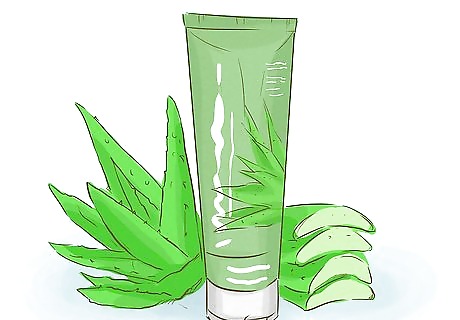
Apply aloe vera gel. Aloe vera contains active compounds that reduce inflammation while stimulating cell growth and repair. It is found as an extract in many commercial moisturizers and as a topical gel. It is available from pharmacies and drug stores. You can apply it regularly to reduce the appearance of scars.
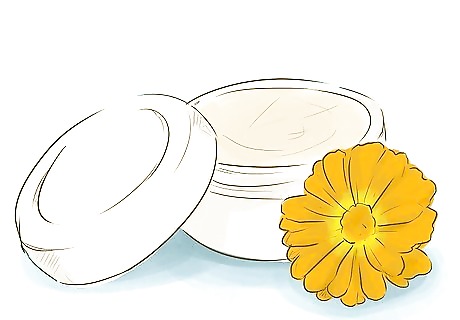
Apply calendula ointment. Calendula, also known as marigold, is another natural substance that is in commercial moisturizers. It is also available as an extract. It is often used to treat scars because it stimulates cell growth and repair. Calendula is also used to improve skin hydration and firmness. Apply it to the skin using a 2 to 5% ointment. Apply the ointment 3 to 4 times per day as needed to reduce the appearance of post-acne scars and blemishes. You can make calendula tea by infusing 2 to 3 grams of florets in 1 cup (240 mL) of warm water. You can use it as a daily facial rinse. People who are allergic to plants in the daisy or aster family, including chrysanthemums and ragweed, may have an allergic reaction to calendula.
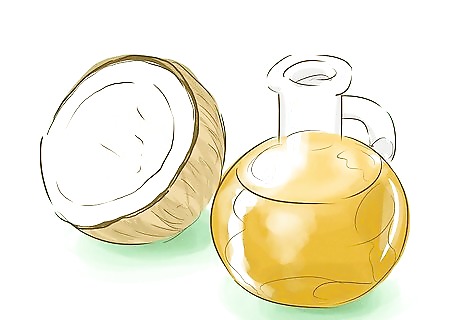
Try coconut oil. Virgin coconut oil contains a blend of vitamin E and fatty acids. These produce anti-inflammatory effects and fight bacteria that can cause other skin infections. Applying 1 to 2 drops of coconut oil on the skin twice daily can significantly reduce dryness. Coconut oil has regenerative properties that may help repair cells and reduce the occurrence of scars. People with oily skin should use coconut oil moderately, about twice a week. Too much oil can clog up pores and cause more acne breakouts. Coconut oil is available at most variety food stores. Make sure the coconut oil is virgin, cold pressed, and organic. Do not use it if you have nut allergies.

Use avocado. Avocado is a fruit rich in many vitamins, nutrients, and fatty acids that stimulate collagen production and tissue repair. You can make an avocado mask that can help heal your scars. Vitamins A and C have anti-inflammatory, antioxidant properties that help protect the skin from harmful free radicals. Vitamin E helps moisturize the skin and reduce the appearance of scars. To make a natural avocado mask, remove the pulp from 1 avocado. Apply it to the affected area for 10–15 minutes. Then, rinse with cool water. Pat your skin dry with a soft washcloth. If you have sensitive, dry skin, you can apply this remedy daily. People with oily skin should limit this to twice a week.
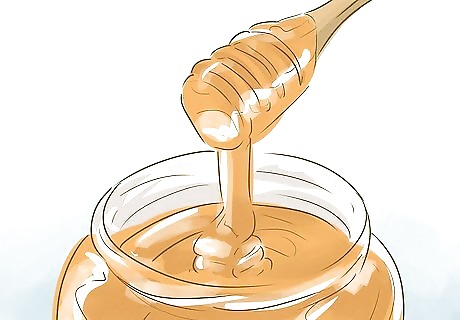
Apply honey. Honey has antibacterial and anti-inflammatory properties that may help improve the appearance of scars and reduce inflammation. To use honey as a topical treatment, simply spread a thin layer onto the affected area and cover it up with a bandage. Manuka honey has the highest concentration of beneficial compounds to reduce scars. Honey may help reduce or prevent infections caused by bacteria. Seek advice from your medical doctor before using it for this purpose.
Applying Natural Remedies
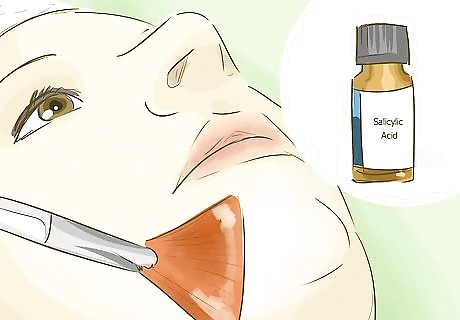
Use a salicylic acid peel. There are many natural remedies you can use as treatment for acne scars. Salicylic acid is naturally occurring plant-based acid. It is an effective treatment for both acne and hyperpigmentation in people with dark skin tones. A dermatologist can administer a salicylic acid peel at their office or recommend a commercial peel kit to use at home. Salicylic acid has minimal side effects and is not recommended for people allergic to aspirin.
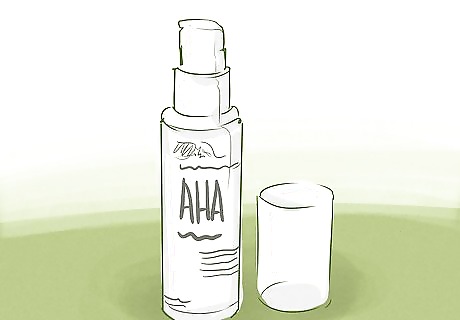
Use alpha and beta hydroxy acid gel. Alpha-hydroxy acids (AHAs) are natural acids in the body that reduce the appearance of scars, blemishes, and wrinkles. They gently exfoliate the top layer of skin. AHAs include lactic acid, malic acid, citric acid, tartaric acid, and beta-hydroxy glycolic acids. Many pharmacies and cosmetic stores sell scar gels containing alpha and beta hydroxy acids. Apply the gel to the affected area up to twice daily. Do not use any product with more than a 20% concentration of AHA or glycolic acid. Too much of these acids can strip the skin of oils and moisture. Your dermatologist can also administer glycolic acid peels at their office.
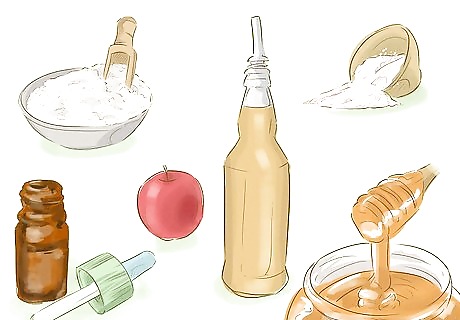
Use an apple cider vinegar peel. Apple cider vinegar is an antiseptic that kills harmful bacteria that can cause acne. It also contains malic, lactic, and acetic acid. These help tone and purify the skin’s surface by stimulating collagen production. This repairs cells and removes dead skin cells. When choosing apple cider vinegar, look for the muddiest, darkest vinegar. The more residue it has, the more beneficial ingredients it will deliver to your skin. Mix ⁄2 cup (120 mL) of organic apple cider vinegar with 1/4 cup (60 g) of baking soda, 1/4 cup (72 g) sea salt, ⁄2 cup (120 mL) of honey, and 5–10 drops of either tea tree or calendula essential oil. Combine all the ingredients in a jar and stir them well. If the paste is too runny, add more soda or salt as needed. The peel shouldn’t run off your face. Apply daily for 1 week with your fingertips. Use gentle circular motions all over the face, avoiding the eye area. Leave on for 5 to 10 minutes before rinsing with cold water.
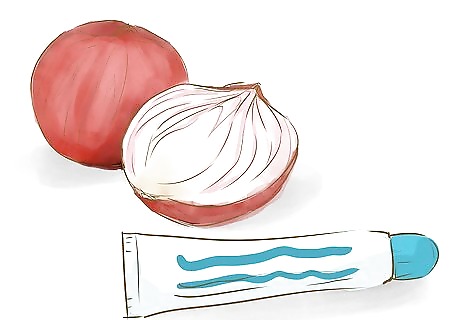
Apply onion extract gel. Many studies support the effectiveness of onion extract to help heal scars and burns. Onions contain quercetin, a natural antioxidant compound, that helps fight harmful free radicals. It also reduces inflammation, stimulates cell growth, and repairs damaged tissue. Onions are rich in antibacterial sulfur that can help reduce acne breakouts. Onion extract also has skin-whitening properties and can reduce blemishes and hyperpigmentation. You can buy onion extract gel from most pharmacies, or you can make it yourself. To make a natural onion paste, use mechanical grater to puree a small onion. Leave the puree to cool in the refrigerator for 20 minutes. This helps reduce the pungent smell that can cause irritation. Remove the puree from the fridge, then apply it to the affected areas. Leave the mixture on for 10–15 minutes, then rinse with cool water. You can use this method once daily until the scars heal. Expect improvements in 4–10 weeks. If you experience severe irritation, stop using the onion gel.

Apply a sea silt mask. Sea silt is a type of mud containing sea salt that washes out of the ocean as sediments in coastal regions. It contains many beneficial substances. These include unsaturated fatty acids, sulfur, and algae with anti-inflammatory and soothing properties. Sea silt can also help smooth the texture of the skin by washing away dead skin cells and bacteria. This improves the overall appearance of scars. Sea silt is available in many commercial face masks that you can buy from a pharmacy or cosmetic store. You can apply sea silt masks twice a week or as recommended by a dermatologist for your skin type. Sulfur and sea salt may cause irritation for people with dry, sensitive skin or inflamed scars.
Eating to Reduce Scars
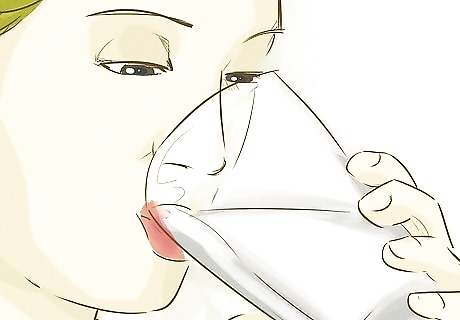
Drink lots of water. Dehydration can cause dry skin. it can also weaken your immune system by not flushing out toxins through sweat and excretion. This makes it harder for your body to heal surface wounds such as acne scars. Staying hydrated can also improve the skin’s elasticity. This can reduce the appearance of wrinkles and depressed acne scars. Drink at least 8 fluid ounces (240 mL) of water every 2 hours to keep your body hydrated. You should aim to drink at least .5 to 1 gallon (1.9 to 3.8 L) of water per day. If you drink caffeinated beverages, drink at least 1 US quart (0.95 L) of water for every 1 cup (240 mL) of caffeine.

Cut out sugar and milk products. The combination of sugar and dairy products is particularly detrimental to the sebaceous glands, which can cause acne. Studies in various parts of the world among indigenous people showed that their teenagers were free of acne when they did not eat dairy products and sugar, but ate what indigenous people consumed. But when they adopted a Western style diet, they developed acne like teenagers in the rest of the world. It’s still unclear whether chocolate can make acne worse, but some studies suggest that it can. Try cutting back on chocolate and see if it improves your acne.
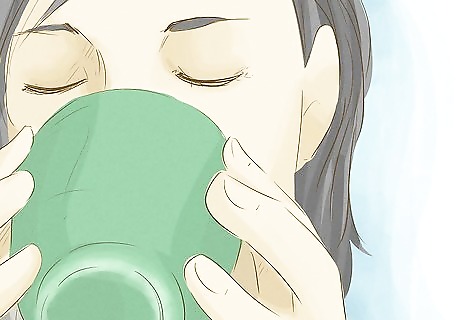
Drink green tea. Green tea is rich in antioxidants called polyphenols that stimulate collagen production and repair skin cells, thus reducing the appearance of scars. The antioxidants also help fight harmful free radicals. They protect against ultraviolet radiation and reduce wrinkles. Green tea can also reduce stress. You can brew green tea by steeping 1 tablespoon (or 2 to 3 grams) of green tea leaves in 1 cup (240 mL) of warm water for 3 to 5 minutes. Green tea can be taken 2 to 3 times daily. Topical treatments that contain green tea may also reduce the appearance of scars.
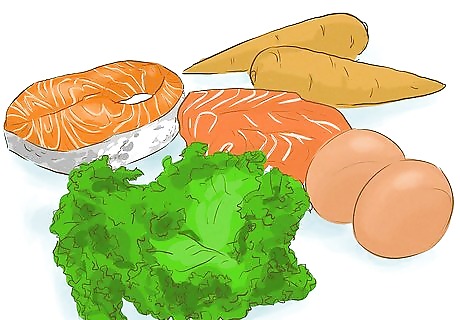
Get plenty of vitamin A. Research shows that vitamin A, also known as retinol, helps boost collagen production. Vitamin A also helps protect the skin from harmful free radicals and ultraviolet radiation. Good sources of Vitamin A include salmon, tuna, egg yolks, carrots, green leafy vegetables, and yellow or orange fruits. Natural sources of vitamin A have no side effects. It is also available as a supplement at most drug stores. You can increase absorption of vitamin A by eating a diet free of unhealthy fats. Avoid margarine, hydrogenated oils, and processed food. The recommended daily dose for vitamin A is 700–900 micrograms. High doses of vitamin A (higher than 3,000 micrograms) can have toxic side-effects, including birth defects and depression. Intake should be carefully monitored.
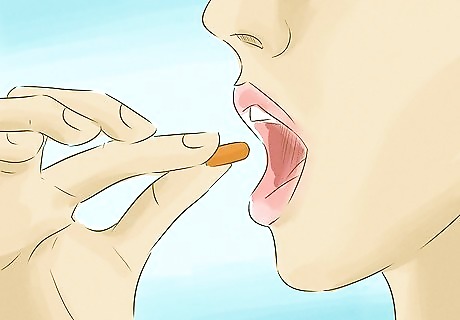
Consume more vitamin C. Vitamin C is an important immunity booster that helps the body produce collagen. Vitamin C is also important antioxidant and immune system booster. You can take vitamin C as a dietary supplement with a recommended dose of 500 mg, split into 2 or 3 times daily. You can also add vitamin C-rich foods to your daily diet. Good natural sources of vitamin C are sweet red or green peppers, citrus fruit and non-concentrated citrus juices, spinach, broccoli and brussels sprouts, strawberries and raspberries, avocados, and tomatoes.

Eat foods with Vitamin E. Vitamin E is an antioxidant that wards off acne breakouts caused by bacteria, viruses, and harmful free radicals. It also helps protect the skin from harmful ultraviolet radiation. It can promote cell renewal and keep the skin moisturized. Vitamin E is in foods such as vegetable oils, almonds, peanuts, hazelnuts, sunflower seeds, spinach, and broccoli. The recommended dosage for adults is 15 mg (22.35 IU) per day. However, newer studies have shown that this valuable antioxidant is safe at 268 mg (400 IU) per day. Ask your doctor about the amount best for you. Eating vitamin E in foods is not risky or harmful. As a supplement, high doses of vitamin E can have serious health consequences.
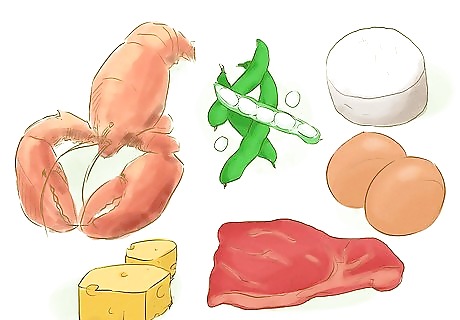
Take zinc. Some studies show that zinc can help in the reduction of scars. You can also apply zinc to the skin as a cream to speed wound healing. Zinc is an essential trace mineral found in many foods you eat on a regular basis. It has antioxidant properties that help protect cells in the body from damage caused by bacteria and viruses. The best dietary sources of zinc are oysters, shellfish, red meats, poultry, cheese, shrimp, crab, beans, sunflower seeds, pumpkin, tofu, miso, mushrooms, and cooked greens. Zinc is available as supplement and in many multivitamin capsules. Easily absorbed forms of zinc are zinc picolinate, zinc citrate, zinc acetate, zinc glycerate, and zinc monomethionine. A daily dose of 10-15 milligrams is recommended. This can be easily attained through a healthy diet. Taking too much zinc can decrease your levels of copper and weaken your immune system. Use zinc creams only with a prescription from your doctor.




















Comments
0 comment